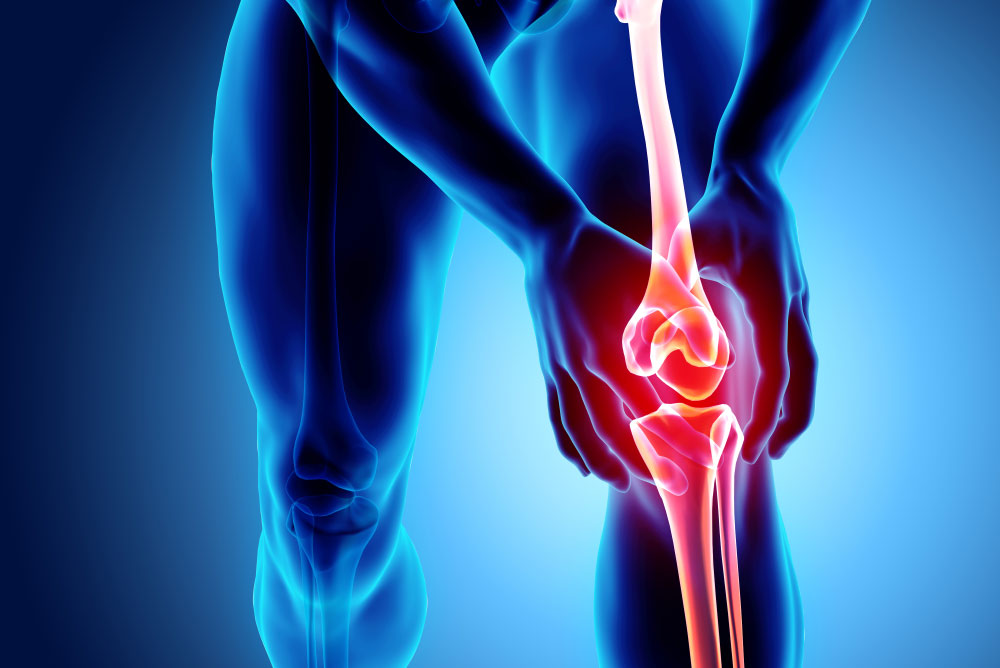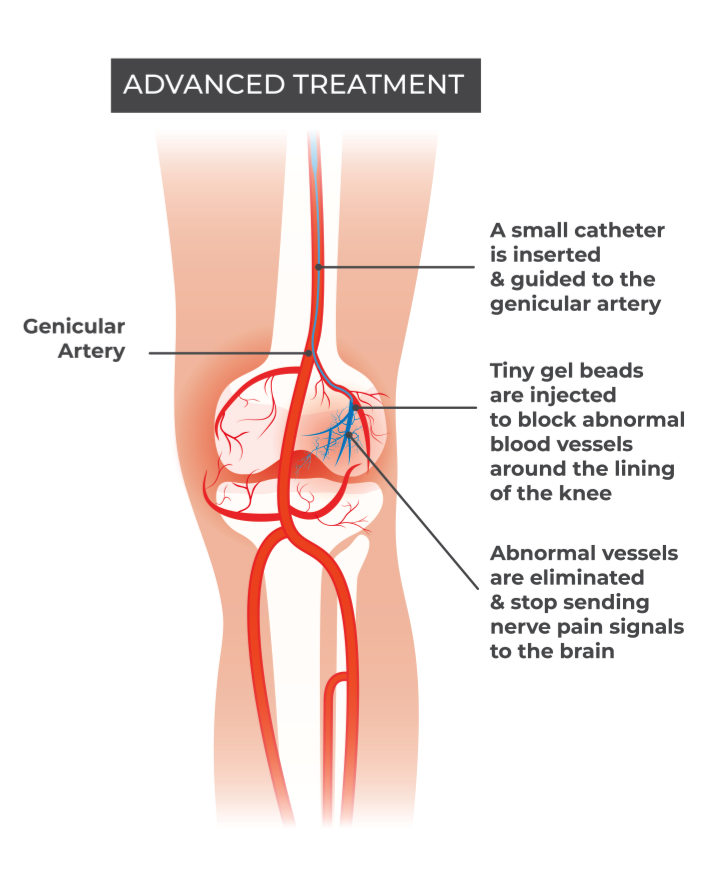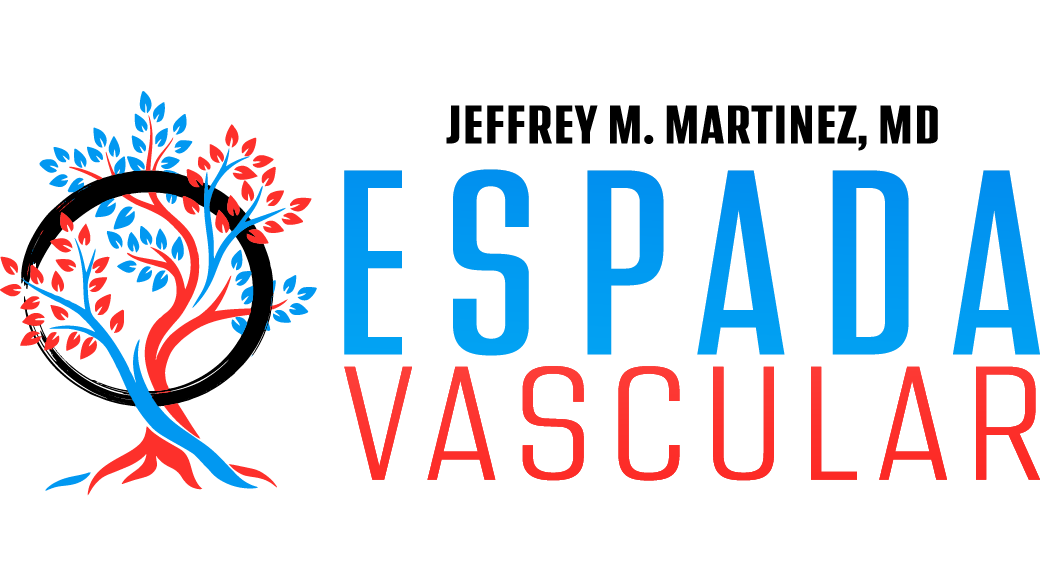OSTEOARTHRITIS

SYMPTOMS OF OA
- Pain during or after movement
- Stiffness that may be most noticeable upon awakening or after inactivity
- Tenderness after applying light pressure to or near the affected joint
- Reduced range of motion and loss of flexibility
- Hear popping or cracking when using the affected joint
- Swelling caused by soft tissue inflammation around the joint
WHAT IS GENICULAR ARTERY EMBOLIZATION?

HOW IS IT DONE?
- Patient is placed under conscious “twilight” sedation for added comfort. This type of anesthesia allows patients to return home the same day.
- A physician uses x-ray guidance to place a small catheter in the patient’s upper thigh or foot area to access the artery.
- The small catheter is guided to the arteries supplying blood to the tissues surrounding the diseased knee.
- Once the small catheter is in place, tiny micro particles are slowly injected to slow the blood supply to the affected joint.
- Inflammation occurring around the knee is significantly reduced and patients quickly experience pain alleviation.
ARE YOU A CANDIDATE FOR GAE?
- Between 40-80 years of age
- Moderate to severe knee pain
- Diagnosed with osteoarthritis
- Local knee tenderness
- Persistent pain after conservative treatment with joint injections, physical therapy, and NSAIDS
RECOVERY AND OUTLOOK
The procedure itself generally takes about an hour. Post procedure patients are advised to refrain from partaking in high-impact activities for 2-3 days but require no further treatment. Within 2 weeks, patients experience substantial pain relief as inflammation in the lining of the knee subsides.
